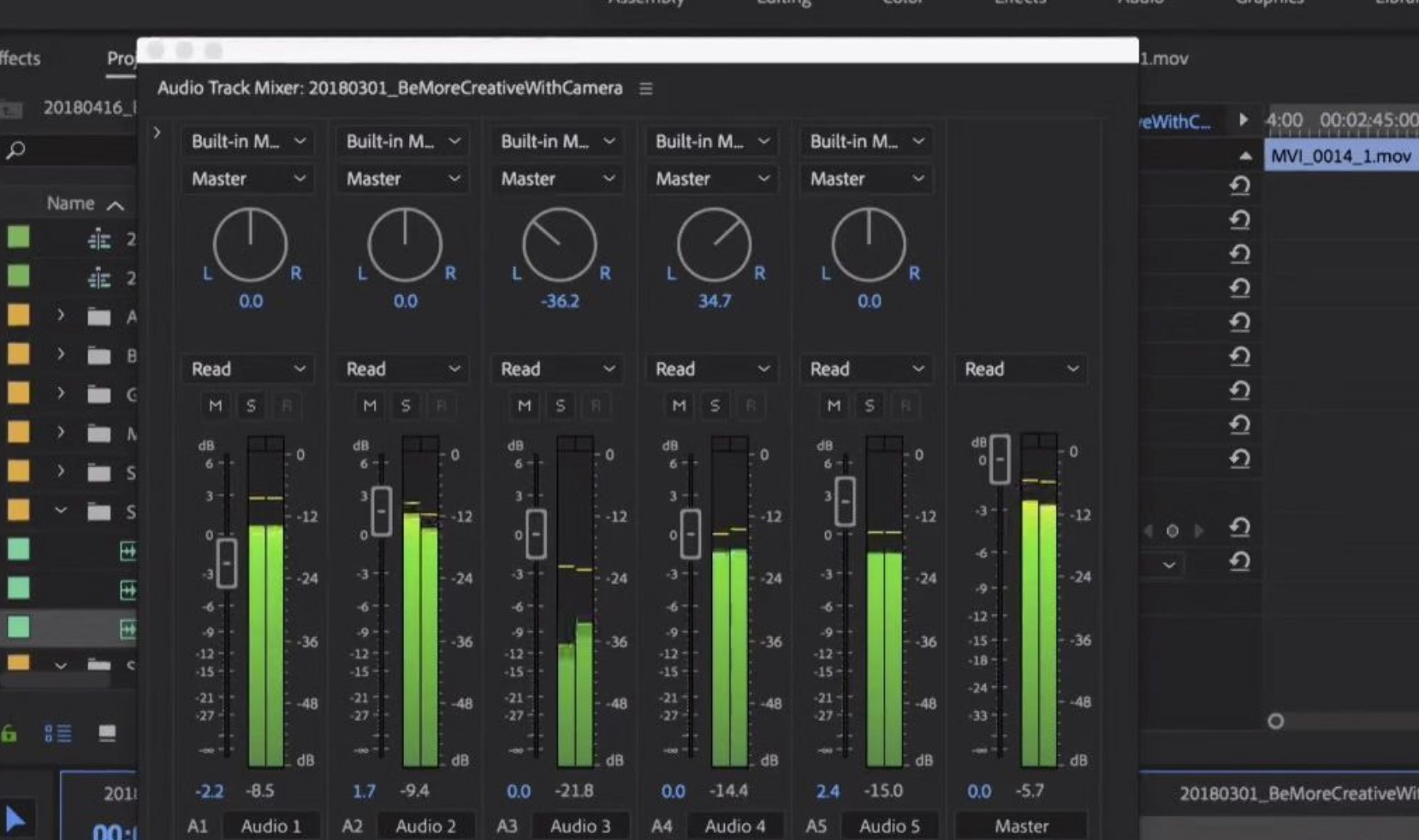Why Audio Mixing is Crucial When Adding Sound to Your Videos
Videos have become an integral part of our lives, whether for entertainment, marketing, or education. Adding sound to videos enhances the overall viewing experience and creates a more immersive atmosphere. However, simply adding audio to videos is not enough; it needs to be mixed professionally to achieve the desired impact.
Importance of Audio Mixing in Videos
Enhances the Overall Quality
Audio mixing is a process of combining and manipulating different audio elements to achieve the desired sonic quality. When done correctly, it enhances the overall quality of your videos. Well-mixed audio ensures that the sound is clear, balanced, and pleasing to the ears. It complements the visuals and helps convey the intended message effectively.
Improves Clarity and Balance
One of the primary goals of audio mixing is to improve clarity and balance. It involves adjusting the volume levels, equalization, and dynamics of various audio components. By doing so, you can ensure that dialogues are easily understandable, background music doesn’t overpower the other sounds, and sound effects are well-integrated into the video.
Creates a Professional and Engaging Experience
Properly mixed audio adds a professional touch to your videos, making them more engaging and immersive. Whether it’s a film, commercial, or online content, high-quality audio enhances the production value and captivates the audience. It helps you stand out from the competition and leaves a lasting impression on viewers.
The Role of Audio Mixing in Different Video Types
Audio mixing plays a crucial role in various video types, contributing to their overall quality and impact. Let’s explore how audio mixing enhances different video genres:
- Films and Documentaries:
In the realm of films and documentaries, audio mixing is paramount for effective storytelling. It ensures that dialogues are clear and intelligible, allowing the audience to follow the narrative effortlessly. Background music sets the mood and enhances emotional moments, while sound effects immerse viewers in the on-screen action. A well-mixed audio track in films and documentaries complements the visuals, creating a captivating and immersive experience.
- Commercials and Advertisements:
Audio mixing plays a vital role in commercials and advertisements, where capturing the viewer’s attention is essential. By skillfully blending voice-overs, background music, and sound effects, audio mixing adds impact and reinforces key messages. Well-balanced audio ensures that the dialogue is prominent and easily understood, while the music and sound effects evoke the desired emotions. A professional audio mix in commercials and advertisements can significantly enhance their effectiveness and leave a lasting impression on the audience.
- Online Videos and Social Media Content:
With the rise of online videos and social media platforms, audio mixing has become increasingly important. In short-form videos, capturing and maintaining the viewer’s attention is crucial. An engaging audio mix can significantly contribute to the success of these videos. By carefully balancing and enhancing the audio elements, such as dialogue, music, and sound effects, audio mixing ensures that the video content stands out in the digital landscape. A well-mixed audio track makes online videos more immersive, memorable, and shareable.
- Educational and Instructional Videos:
Audio mixing also plays a vital role in educational and instructional videos. Clear and intelligible narration is essential to effectively convey information and instructions. By adjusting the volume levels and dynamics, audio mixing ensures that the voice-over is consistently audible and well-balanced with background music or sound effects. A well-mixed audio track in educational videos enables viewers to understand and retain the presented information more easily.
- Gaming and Virtual Reality (VR) Experiences:
In the realm of gaming and virtual reality, audio mixing plays a crucial role in creating immersive and realistic experiences. By leveraging spatial effects and precise panning techniques, audio mixing enhances the sense of location and movement in the virtual environment. Properly mixed audio elements, including dialogue, music, and sound effects, contribute to the overall immersion and enhance the player’s engagement with the game or VR experience.
In summary, audio mixing is essential in various video genres, ranging from films and documentaries to commercials, online videos, educational content, and gaming experiences. It ensures clear dialogue, balanced audio elements, and an immersive sonic environment. With expert audio mixing, each video type can achieve its intended impact, captivating the audience and elevating the overall viewing experience.
Key Elements of Audio Mixing
To achieve an exceptional audio mix, several key elements need to be considered and balanced effectively.
Volume and Dynamics
Controlling the volume levels and dynamics is crucial for a well-balanced audio mix. It ensures that no sound is too loud or too soft, maintaining a consistent listening experience. Proper dynamics processing helps add impact and emotion to the audio elements.
EQ and Frequency Balancing
Equalization (EQ) is used to shape the frequency response of different audio components. By adjusting the EQ, you can enhance clarity, remove unwanted resonances, and ensure each element occupies the right sonic space. Balancing frequencies is essential to prevent muddiness or harshness in the mix.
Spatial Effects and Panning
Spatial effects and panning create a sense of space and depth in the audio mix. By placing sounds in different positions within the stereo or surround sound field, you can enhance the realism and immersion. Panning helps create movement and separation between audio elements.
Sound Effects and Foley
Sound effects and Foley are crucial for adding realism and texture to videos. These elements are carefully designed and mixed to synchronize with the visuals, enhancing the audience’s perception of the on-screen actions. Well-mixed sound effects and Foley contribute to the overall cinematic experience.
Music and Background Score
Music and background score play a significant role in setting the mood and eliciting emotions in videos. Properly mixing these elements ensures that they seamlessly blend with other audio components and enhance the desired impact. The music should not overpower dialogues or sound effects but rather support the overall narrative.
Tools and Techniques for Audio Mixing
To achieve professional audio mixes, various tools and techniques are available to audio engineers and content creators.
Digital Audio Workstations (DAWs)
Digital Audio Workstations (DAWs) provide a comprehensive platform for audio mixing. They offer a wide range of features and tools, allowing precise control over every aspect of the mix. Popular DAWs include Pro Tools, Logic Pro, and Ableton Live.
Audio Plugins and Effects
Audio plugins and effects are essential tools in the audio mixing process. They offer a wide range of processing options, including EQ, compression, reverb, delay, and more. These plugins can be used within the DAW or as standalone applications.
Mixing Console and Hardware
For professional studios, mixing consoles and hardware play a significant role in audio mixing. These physical devices provide tactile control over the mix and offer analog warmth and character. However, with advancements in digital technology, many mixing tasks can be accomplished within the DAW.
Studio Monitoring and Acoustic Treatment
Accurate studio monitoring and proper acoustic treatment are crucial for making informed mixing decisions. High-quality studio monitors provide an accurate representation of the audio, ensuring the mix translates well to different playback systems. Additionally, treating the room’s acoustics helps minimize unwanted reflections and resonances.
Tips for Effective Audio Mixing
While audio mixing can be a complex process, following these tips can help you achieve effective and impactful results.
Organize Your Workflow
Maintain an organized workflow by labeling and grouping audio tracks, using color coding, and creating markers for important sections. This helps streamline the mixing process and makes it easier to navigate through the project.
Understand the Emotional Impact
Consider the emotional impact you want to convey through the audio mix. Understand the mood, atmosphere, and intention of the video, and use appropriate audio elements to evoke those emotions. A well-mixed audio track can greatly enhance the storytelling and viewer engagement.
Maintain Consistency
Consistency is key in audio mixing. Ensure that the volume levels, EQ settings, and effects remain consistent throughout the video, unless intentional changes are required. Consistency provides a cohesive listening experience and prevents distractions.
Pay Attention to Detail
Pay attention to small details in the audio mix, such as removing unwanted background noise, ensuring smooth transitions between audio clips, and fine-tuning the balance between different elements. These subtle enhancements can greatly improve the overall quality of the audio.
Seek Professional Help When Needed
If you lack experience or are working on a high-stakes project, consider seeking professional help from an audio engineer or a specialized audio mixing service. Their expertise and trained ears can elevate the audio quality and ensure a polished final product.
Audio mixing plays a crucial role in the overall quality and impact of videos. By enhancing clarity, balance, and professionalism, it creates a captivating experience for viewers. Understanding the importance of audio mixing, key elements involved, and utilizing the right tools and techniques can help you achieve exceptional audio mixes that elevate your videos to the next level.
FAQs
Q1. Why is audio mixing important in video production?
Audio mixing is important in video production as it enhances the overall quality, improves clarity and balance, and creates a professional and engaging experience for the audience.
Q2. What are some key elements of audio mixing?
Key elements of audio mixing include volume and dynamics control, EQ and frequency balancing, spatial effects and panning, sound effects and Foley, and music and background score integration.
Q3. What tools are used for audio mixing?
Digital Audio Workstations (DAWs), audio plugins and effects, mixing consoles and hardware, and studio monitoring with proper acoustic treatment are some of the tools used for audio mixing.
Q4. How can I improve my audio mixing skills?
To improve audio mixing skills, you can practice regularly, study tutorials and resources, experiment with different techniques, seek feedback from professionals, and analyze well-mixed audio in various genres.
Q5. When should I consider seeking professional help for audio mixing?
You should consider seeking professional help for audio mixing when you lack experience, are working on a high-stakes project, or require expert ears to ensure a polished final product.

Since 2019, Sabrina has been sharing her expertise as the author of three online courses, making photography and videography accessible to all, regardless of age or talent. Her blog, moonlight3d, serves as a hub for connecting with her audience, offering valuable tips on software, videography, and personal experiences. Feel free to reach out to Sabrina for insights and guidance on your creative journey through photography and videography.

